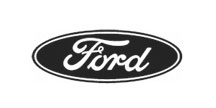Car Leasing Guide: The Thing About Fees
When leasing a car, what a car leasing guide will not show you is how you are supposed to understand how much a car is actually worth. The problem with most people who enter a lease is that they are more concerned with the monthly payments, and this is the reason that many people end up experiencing really bad deals. Now here is a car leasing guide referring to how you should treat a lease.
A car lease is basically something that you are not paying full value for. You are actually spending for the projected loss of value. In other words, you are paying for the depreciated value of the car. The car will be in your use for a typical 2 to 3 years. Let's say a $30,000 will lose half its value in 3 years. Now, whatever remains is what is known as the residual value. This leaves you with a smaller monthly payment because you are paying back half of a car's value.
Now for the fees; let's look at mileage. First is the lease acquisition fee which is almost always about $600. This is charged by the automaker or finance company that is underwriting your lease. These are not always stated in the contracts and therefore are a perfect opportunity for dealers to charge even more than that. Then there is the security fee which is one month's lease payment, but this one is refunded eventually. Turning in the car at the end of a lease term will also mean that you experience even more fees. There is the lease disposal fee which is almost over $400. Then there is the charge per mile of all mileage you may have used in excess of the limit. Then there is what is known as "wear and tear" fees that will cover the small mechanical and cosmetic fixes that are needed. This car leasing guide doesn't show all the fees that are involved, so make sure that you question your dealer intensely to understand what you are getting yourself into.



